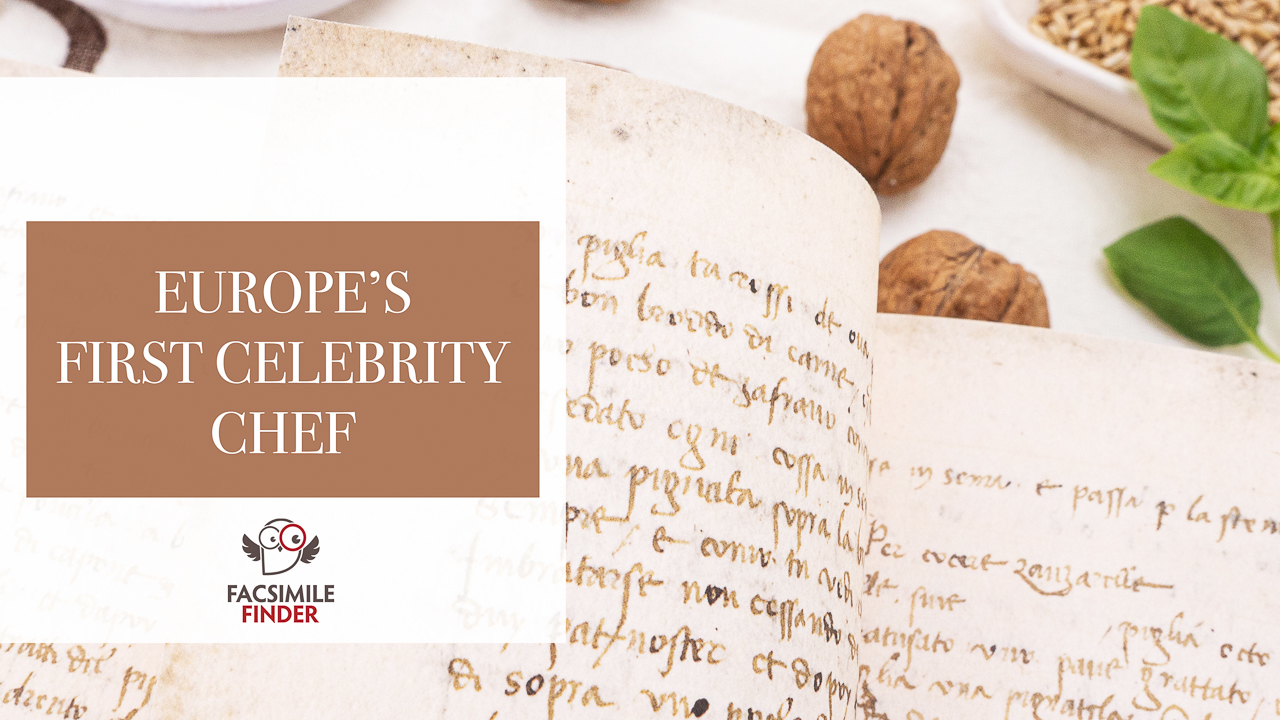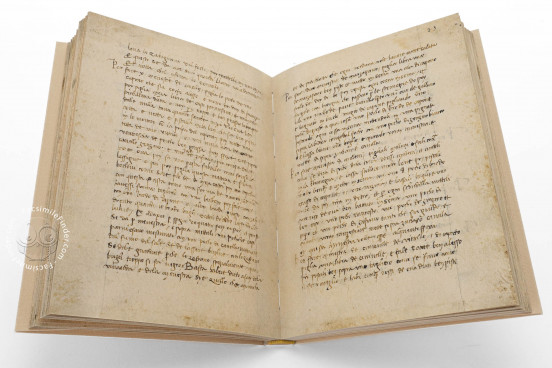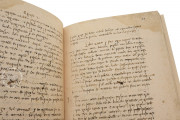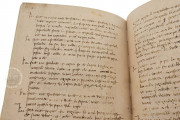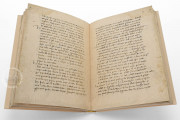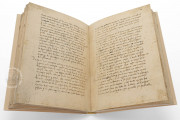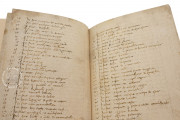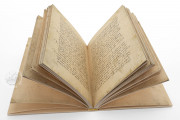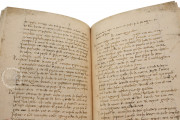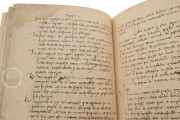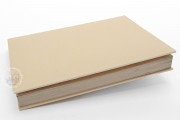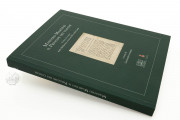The Cookbook of Maestro Martino is a collection of recipes for savory and sweet foods fit for the tables of the wealthy. It was copied in northern Italy around 1500. Its recipes are the work of Maestro Martino—also known as Martino de Rossi and Martino da Como. The text is revolutionary in focusing exclusively on food and grouping the recipes according to their main ingredients or function, with careful attention paid to the presentation of plated dishes. It is also remarkable for elevating vegetables to a higher status in cooking.
The manuscript's recipes are arranged into eight "books": meat dishes, stews, sauces, cakes and savory pies, fritters, jellies, egg dishes, and fish dishes. The cooking instructions are preceded by a table of contents listing 294 recipes. The manuscript includes 248, the others written on leaves now estranged from the book.
On the Tables of Aristocrats
Maestro Martino worked in the service of Francesco Sforza (1401-1466), Duke of Milan, and Cardinal Ludovico Trevisan (1401-1465), Patriarch of Aquileia, the latter known for his lavish banquets. He also worked for the aristocratic military captain Gian Giacomo Trivulzio (1441-1518), and Martino is identified as Trivulzio's chef in the manuscript.
Sister Manuscripts
Two sister manuscripts of Martino's cookbook survive (Washington, Library of Congress, MS Vehling 645, and Vatican City, Biblioteca Apostolica Vaticana, MS Urb. lat. 1203). Both date from around 1460-1480 and are handsome manuscripts probably intended for presentation. By contrast, the Riva del Garda manuscript is a more practical volume. It was written by a single scribe in a competent but uneven Mercantesca, the semi-cursive script used for business dealings in early modern Italy.
Unique Survivals
Although the texts of the three manuscripts are similar, the Riva del Garda cookbook is arranged differently and includes unique recipes and unique versions of others. Among Martino's preparations known only from this manuscript are how to make tagliarini (thin ribbons of pasta "in the Genoese style") and how to cook snails (which, the recipe states, should be collected from fennel, rosemary, and certain fruit vines, but not others).
A Master of Spices
Martino's cookbook is remarkable for its specific timings. Ravioli, for example, should be cooked as long as it takes to recite the Lord's Prayer twice. Martino used spices to enhance (not cover up) the flavors of a dish's main ingredients; he flavored many dishes with inventive combinations involving saffron and ginger.
Sweets for Their Own Sake
Martino was a European pioneer in creating sweet dishes intended to serve as a separate course in a meal. He undoubtedly learned the use of large amounts of sugar (cultivated in Cyprus and Sicily) from medieval Arabic cuisine.
Celebrity Chef
The humanist and eventual papal librarian Platina (1421-1481) knew Martino personally, as he proudly reports In his De honesta voluptate et valetudine ("On Honest Indulgence and Good health"), a combination health manual and cookbook published in the 1470s. He goes on to claim (truthfully) that the recipes included in his book are Maestro Martino's. This book, originally published in Latin and often reprinted, was translated into the European vernaculars in the following decades.
A Remarkable Discovery
The Riva del Garda manuscript was discovered in the 1930s among the documents in the Archivio Storico Comunale of Riva del Garda. It is bound in leather over pasteboard, and eleven leaves missing from the end are in a private collection.
We have 1 facsimile edition of the manuscript "Cookbook of Maestro Martino": Libro de Cosina di Maestro Martino de' Rossi facsimile edition, published by Nova Charta, 2024
Request Info / Price
